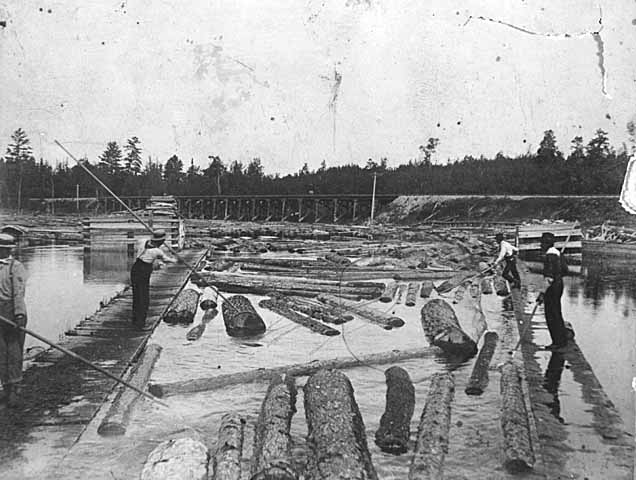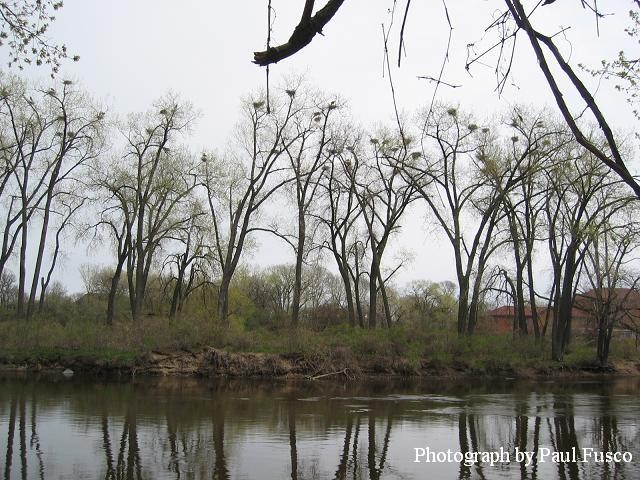Olson’s Island Heron Rookery
Hours are the same as all Minneapolis Parks 6:00 AM to 10:00
PM.
Another Cache in the LIND-BOHANON Neighborhood

The Origin of the Island’s Name
Back in the 1890’ there was a river pig working for the C. A.
Smith Lumber Company by the name of Ernie Olson who continually
proved himself one of the strongest and hardest working men on the
crew. Olson was also one of those Scandinavians who was keen on old
world socialism and even more so on temperance. None of these three
attributes made Olson the most popular with the rest of the crew.
It was said that Olson would drink nothing but spring water from
the nearby riverside spring proclaiming that the water’s qualities
were responsible for strength and health. Having heard this time
and time again day after day the other worker referred to this
spring as “Temperance Spring”. It was the C. A. Smith Company that
named the island Olson’s Island after Ernie Olson and it has
retained that name ever since.
Today, the Great Blue Heron Rookery

This location lends itself to the best photography of Great Blue
Herons in the Twin Cities. The Great Blue Herons return on about
St. Patrick’s day, about the middle of March. When they return they
are usually quite tired and tend to spend the first day or so just
above the river on the east side of the island soaking up as much
sun as possible. They then move up to the nests and begin the
tidying up and mate impressing activities. This is a good time for
viewing as they are frequently coming and going gathering sticks
and finding just the right location for each one. They then pair up
and copulation begins, eggs are laid and egg sitting begins while
the leaves have yet to come out. They leaves then come out and it
gets a bit dull watching them until towards the end of March when
the eggs hatch and once again the comings and goings increase
dramatically. Once again the leaves are out now but feeding can be
seen on the more visible nests. But this is a special time in and
of itself for when the 60 plus nest all have young learning to
communicate and hungry as can be the cacophony created it not to be
missed. Several weeks later the young will begin to test their
wings and flight on the edge of the nest. Later they will venture
to the ground and begin to wonder where all the regurgitated good
eats that their parents brought back to them actually came from.
Although much rarer to see is the very beginning of the young
Heron’s beginnings at a life of hunting, what I like to call Stick
Fishing. The young will hold tight to the island while developing
their motor skills by fishing for sticks and other flotsam. Often
times catching a stick, cocking their head while examining it and
then releasing it and often times catching the same stick several
times over. Then the parents will return and the young will go back
to the nest as it seems sticks are less nutritional than the what
the parents are bringing back.